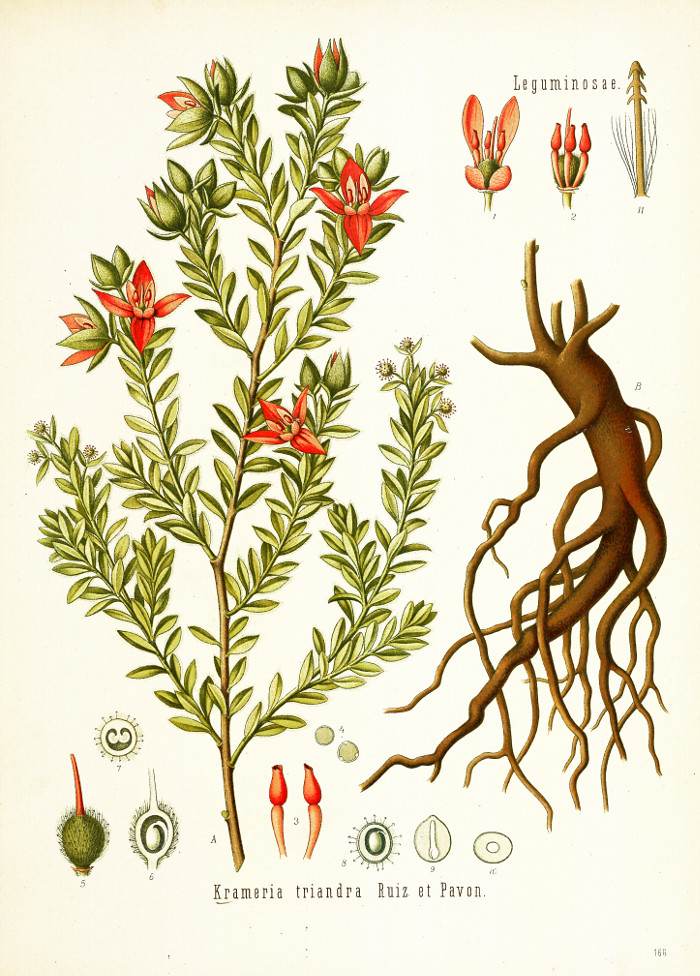Krameria lappacea (Dombey) Burdet et Simpson - syn.Krameria triandra Ruiz et Pavon - Krameriaceae
Peruvian rhatany, (Peru-)Ratanhia
Very slow growing shrub, native to Peru, Bolivia, northern Chile; hemi-parasitic plant with wide range of hosts plants. http://www.floraweb.de/map-pro/lectures/Weigend_Ratanhia.pdf
South Americans refer to this plant as „raiz para los dientes“, which means „root for the teeth“. Extracts are used as mouthwashes against inflammations of the mouth and gums. http://es.wikipedia.org/wiki/Krameria_lappacea
„The roots are traditionally used against inflammations, minor injuries, and in dental care. In Europe it was introduced about 200 years ago by Hipólito Ruíz due to its adstringent properties and found its way into many pharmacopoeias. The red root extracts contain mainly tannins (catechins and proanthocyanidins). Recently more attention has been given to the occurrence of neolignans and to the antioxidant and antimicrobial activities. Despite its traditional use over the entire distributional range, commercial sourcing mainly takes place in Peru.“
[Towards a standardization of biological sustainability: Wildcrafting Rhatany (Krameria lappacea) in Peru.
Weigend, M., Dostert, N., Medicinal plant conservation, Vol.11, 2005, 24-27]
http://www.bcp.fu-berlin.de/biologie/arbeitsgruppen/botanik/ag_hilger/personen/wissenschaftliche_assistenten/maximilian_weigend/downloads/Weigend_Dostert_Krameria.pdf
A dichloromethane extract of the roots of K.lappacea as well as several isolated lignan derivatives exhibited topical antiedematous properties comparable to those of indomethacin. Two of the most potent compounds, 2-(2-hydroxy-4-methoxyphenyl)-5-(3-hydroxypropyl)benzofuran and (+)-conocarpan, showed activity profiles similar to that of hydrocortisone, regarding their action against time-dependent edema development and leukocyte infiltration up to 48 h after croton oil-induced dermatitis induction. This supports „not only the ethnopharmacological use of K. lappacea roots but also reveal that the isolated lignan derivatives contribute strongly to the anti-inflammatory activity of this herbal drug.“
[Lignan derivatives from Krameria lappacea roots inhibit acute inflammation in vivo and pro-inflammatory mediators in vitro. Baumgartner, L., Sosa, S., Atanasov, A. G., Bodensieck, A., Fakhrudin, N., Bauer, J., Stuppner, H. , Journal of natural products, Vol.74(8), 2011, 1779-1786]

Krameria lappacea (Dombey) Burdet & B.B. Simpson [as Krameria triandra Ruiz & Pavon]
Köhler, F.E., Medizinal Pflanzen, vol. 2: t. 166 (1890)
http://www.plantillustrations.org/species.php?id_species=578655